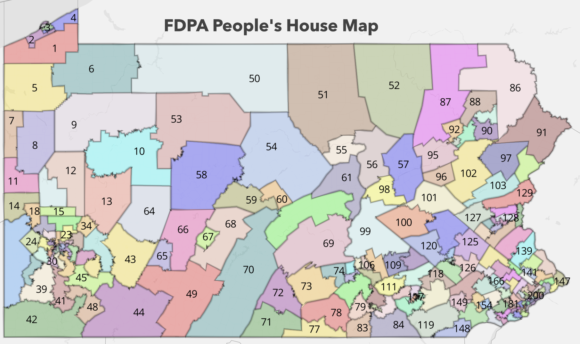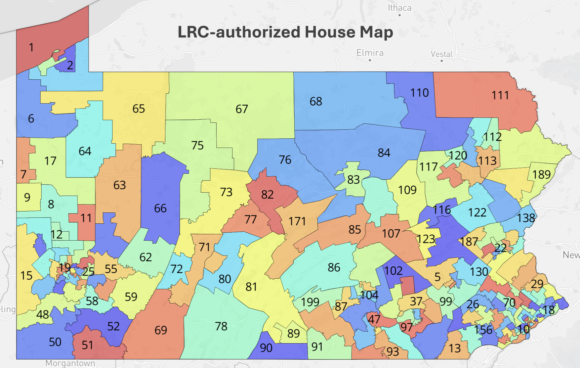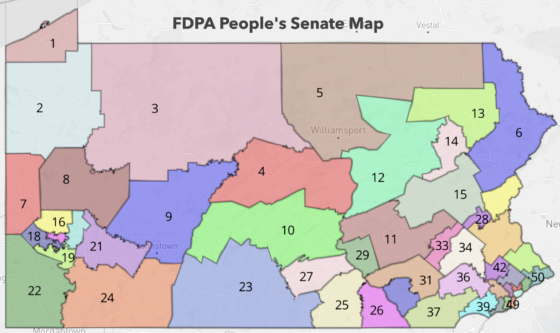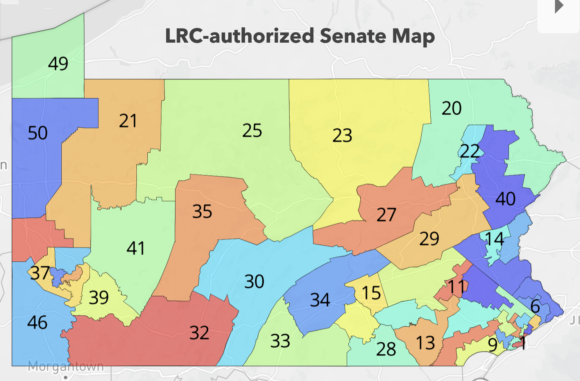Who Drew the Maps?
Who drew the Pennsylvania legislative district maps that are currently in effect?
Article 2, § 17 of the PA Constitution describes the Legislative Reapportionment Commission responsible for drawing Pennsylvania’s House and Senate maps “in each year following the Federal decennial census.” The commission includes majority and minority leaders from both chambers, and a chair chosen by the four of them. If the four leaders can’t agree, the chair is selected by the PA Supreme Court. In 2021, as in decades past, the four caucus leaders could not agree, and the court chose Mark Nordenberg, chancellor emeritus of the University of Pittsburgh and chair of the university’s Institute of Politics.
The 2021–2022 work of the commission, including voting meetings and many hearings, is a matter of public record, documented on the Legislative Reapportionment Commission website. However, some critics of the process have suggested that maps drawn by Fair Districts PA were adopted by the Legislative Reapportionment Commission.
Did the LRC just adopt the maps that FDPA produced?
To answer this question, compare the FDPA People’s Map and the map that the LRC approved. Click on the links to examine specific regions or districts more closely.
- FDPA People’s House Map submitted to the LRC.
- LRC-authorized House map that’s currently in effect.


You can also compare Senate maps.
- FDPA People’s Senate Map submitted by FDPA.
- LRC-authorized Senate map that’s currently in effect.


So who drew the final LRC maps?
While the commission hired a mapping consultant, Jonathan Cervas, a political scientist from Carnegie Mellon, the mapping itself was done behind closed doors, as has been the case with all past PA redistricting. Each caucus leader and their own consultants had a hand in decisions on specific districts. The final Senate map was approved by all 5 commissioners in a public vote. The final House map received 4 Yes votes and 1 No.
According to the final report by LRC Chair Mark Nordenberg, commissioners incorporated many suggestions made in comments and testimony, including exact duplication of suggested changes offered by a bipartisan group of four representatives from the Greater Pittsburgh area. To quote Chair Nordenberg’s report:
The LRC’s Final Plan … is the product of exhaustive efforts by the Commission members and their teams, unprecedented levels of contact with and feedback from the public, and a deep reservoir of invaluable expert advice. The LRC’s Final Plan performs better on almost every metric than the plan currently in effect. Indeed, the Commission’s maps for the House and Senate score better on county splits, municipal splits, and compactness than the maps currently in effect.
The 2021–2022 mapping process was the most public in PA history, with more public input, scrutiny, and response than ever, even in the middle of a global pandemic. Yet there’s nothing in law to require such a public process in the future, and no guarantees that public input be included.
FDPA continues to advocate for an amendment to the PA Constitution to create an even more citizen-driven, transparent process.